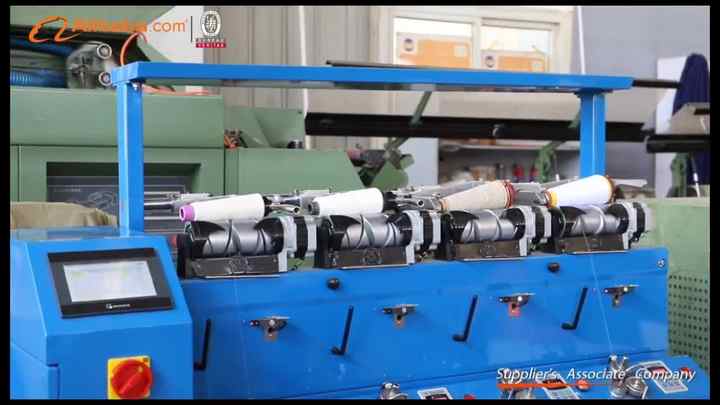Advanced Technology for Optical Fibre Diameter Analyser Precision
Advanced Technology for Optical Fibre Diameter Analyser Precision
Blog Article
Enhance Your Fibre Optic Projects With an Effective Size Analyser
The assimilation of a reliable size analyser into fiber optic jobs acts as a critical component in achieving precision and consistency. By assisting in precise diameter dimensions, these analysers not only improve the high quality of installations but likewise mitigate potential compatibility concerns amongst components. The advanced capabilities of contemporary analysers enhance data collection and high quality control procedures. As we discover the important attributes and benefits of these devices, it becomes noticeable how they can transform project end results and guarantee adherence to market criteria. What stays to be discussed is just how to effectively execute these analysers in your existing process.
Relevance of Diameter Dimension
Gauging the diameter of fibre optic cables is a vital job that guarantees optimum efficiency and dependability in communication systems. Precise size dimension is important for different factors, mostly for preserving signal stability and lessening loss. A cord's size straight affects its capability to transmit light efficiently; deviations from the specified diameter can bring about increased attenuation, which influences the overall performance of the network.
Furthermore, specific measurement is essential throughout the setup and maintenance of fibre optic systems. An improper fit in between adapters and wires can cause signal destruction or complete failing of communication links. By making sure that diameters are within defined resistances, service technicians can improve compatibility in between components, causing better system reliability.
Furthermore, size dimension plays a substantial role in high quality control throughout production. Uniformity in the size of fibre optic cable televisions is essential for ensuring uniform performance across various batches. optical fibre diameter analyser. This consistency assists producers maintain market requirements and cultivates self-confidence amongst end-users
Features of an Efficient Analyser
An efficient analyser for fiber optic projects have to include numerous vital functions that boost accuracy and functionality in size measurement. High-resolution optical sensing units are necessary for exact diameter readings, allowing customers to detect even the smallest variants in fibre density. These sensing units need to be enhanced by innovative calibration systems, ensuring constant efficiency across various conditions and materials.
Second of all, an user-friendly user interface is essential for assisting in ease of procedure. This includes instinctive software application that enables smooth information input and outcome, along with graphes of the measurements taken. A mobile style enhances use in various area settings, making it much easier to conduct evaluations on-site.
In addition, the analyser must sustain several measurement modes, suiting different fibre kinds and applications. The capability to shop and get historic data is another essential function, enabling users to track efficiency in time and make educated decisions.
Advantages for Fibre Optic Projects
Executing a diameter analyser in fibre optic jobs supplies significant benefits that substantially improve project effectiveness and top quality. Among the primary benefits is the ability to make certain exact dimensions of fiber size, which is essential for preserving optimal efficiency in fiber optic systems. Exact size analyses assist in the identification of disparities that could result in signal deterioration or loss, therefore More Info guaranteeing top quality transmission.
Additionally, making use of a size analyser simplifies the high quality control process. By automating dimension jobs, job groups can lower the time spent on hand-operated examinations, bring about faster task completion and decreased labour costs. This effectiveness additionally allows for even more rigorous screening methods, leading to improved item reliability.
Additionally, uniformity in fiber diameter measurements promotes compatibility with various other fiber optic elements, minimizing the risk of installation errors and improving total system performance. The consolidation of a diameter analyser not just aids in preserving sector criteria but also cultivates confidence in project deliverables.
Combination Into Existing Process
Incorporating a size analyser right into existing workflows can significantly boost the operational efficiency of fibre optic jobs. By perfectly including this modern technology, groups can achieve exact dimensions that are critical to preserving the stability and performance of fibre optic systems. This assimilation enables real-time data collection and analysis, which can be essential throughout the production and installment stages.
Furthermore, the ability to automate diameter measurement procedures decreases the potential for human mistake, making sure consistent quality assurance throughout the job lifecycle. The data generated can be quickly shared across platforms, facilitating collaboration amongst engineers, service technicians, and task managers. This ease of access improves decision-making and increases task timelines.

Choosing the Right Diameter Analyser
When choosing a diameter analyser for fiber optic projects, it is necessary to consider several crucial factors that straight impact measurement precision and operational effectiveness. The resolution and precision of the analyser must straighten with the particular needs of your task. Higher resolution instruments can identify minute variants in size, which is important for making certain optimal performance in fibre optic systems.
For projects with limited due dates, a diameter analyser that provides rapid data purchase can dramatically boost efficiency. In addition, think about the analyser's compatibility with existing systems and software.
Another crucial factor more tips here is the range of diameters the analyser can suit. By carefully assessing these variables, you can select a size analyser that enhances the performance and accuracy of your fibre optic jobs.
Final Thought
Finally, the combination of an effective size analyser is paramount for improving fiber optic jobs. Exact diameter dimensions ensure optimal performance and integrity while decreasing installment errors. Advanced functions facilitate real-time data collection and compliance with industry criteria, eventually raising the quality of deliverables. By prioritizing the selection and implementation of an ideal analyser, project efficiency is significantly boosted, paving the means for effective end results in fibre optic applications.
A cord's diameter straight influences its ability to transfer light successfully; inconsistencies from the defined diameter can lead to raised attenuation, which impacts the general performance of the network.

Report this page